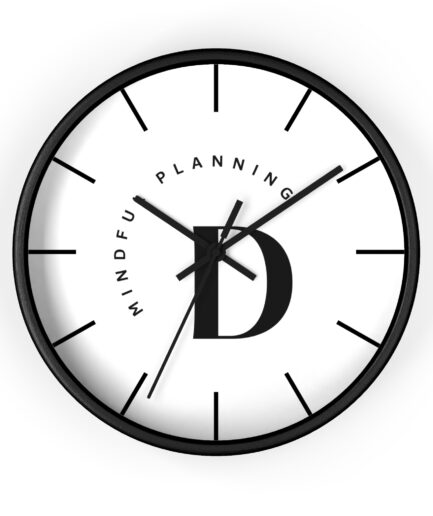n a world that never seems to stop moving, staying present can feel like a challenge. Between work demands, social obligations, and the constant pull of notifications, our minds often wander to the past or race toward the future, leaving little room for the here and now. Yet, practicing mindfulness—living fully in the present—can transform the way we experience life, bringing calm, clarity, and joy even in the busiest of times. Here’s how to embrace mindful living and stay present, no matter how hectic life gets.
1. Start with Small Moments of Awareness
Mindfulness doesn’t require hours of meditation. It begins with small, intentional moments of awareness throughout your day. Whether you’re drinking your morning coffee, brushing your teeth, or commuting, take a moment to tune into your senses. What do you see, hear, feel, or smell? Bringing your attention to the present moment is the first step to cultivating mindfulness.
Practice Tip: While sipping your coffee or tea, hold the mug, notice its warmth, and savor the aroma. A Color-Changing Mug can even serve as a reminder to slow down and enjoy this moment fully.
2. Create a Mindful Morning Routine
How you start your day sets the tone for everything that follows. A mindful morning routine, free from rushing and distractions, can help you stay grounded. Start with a few minutes of journaling, setting intentions, or simply sitting in stillness before diving into your daily tasks.
Morning Practice: Use a Morning Journal to jot down your thoughts, goals, or gratitude. This practice helps clear mental clutter and sets a purposeful foundation for the day.
3. Focus on One Thing at a Time
Multitasking often pulls our attention in multiple directions, leaving us stressed and less productive. Instead, try single-tasking: give your full attention to one task at a time. Whether it’s responding to an email, eating lunch, or talking to a loved one, being fully present allows you to engage more deeply and enjoy the experience.
Mindful Insight: When working, block off time for focused work and remove distractions. Put your phone away, close unnecessary tabs, and immerse yourself fully in the task at hand.
4. Use Your Breath as an Anchor
When life feels overwhelming, your breath can serve as a powerful anchor to the present. Take a few deep, intentional breaths to calm your mind and bring your attention back to the moment. Deep breathing activates your body’s relaxation response, helping you regain clarity and focus.
Breathing Tip: Try a simple breathing exercise: inhale deeply for four counts, hold for four counts, and exhale for four counts. Repeat this for a minute to center yourself.
5. Minimize Distractions
Staying present becomes much easier when distractions are minimized. Create boundaries with technology by silencing unnecessary notifications and scheduling specific times to check emails or social media. A calmer external environment fosters a calmer internal state.
Practical Tip: Design a distraction-free workspace by decluttering and using tools like a Desk Organizer to keep your essentials in order. A clean space can help you maintain focus and presence.
6. Practice Gratitude
Gratitude is a cornerstone of mindfulness. It shifts your focus from what’s missing to what’s already here, grounding you in the present moment. Spend a few minutes each day reflecting on what you’re grateful for, whether it’s a kind gesture, a small achievement, or simply a beautiful sunset.
Gratitude Ritual: Write down three things you’re grateful for at the end of each day. Over time, this practice trains your mind to focus on the positive and stay present.
7. Embrace “Pause Moments”
In the middle of a busy day, give yourself permission to pause. Even a 30-second break to close your eyes, stretch, or breathe deeply can reset your mind and body. These small moments of pause can help you regain perspective and prevent burnout.
Mindful Pause: Use transitions—like waiting in line or walking to your next meeting—as opportunities to reconnect with the present moment. Focus on your breath or take in your surroundings.
8. Cultivate Non-Judgmental Awareness
Mindfulness isn’t about stopping thoughts or emotions—it’s about observing them without judgment. When you notice your mind wandering or emotions rising, gently bring your attention back to the present. This practice fosters self-compassion and helps you respond thoughtfully rather than react impulsively.
Reflection Tip: Use a journal to explore your thoughts and emotions at the end of the day. Writing can help you process and approach challenges with greater clarity.
9. Spend Time in Nature
Nature has a unique ability to bring us into the present moment. Whether it’s a walk in the park, a hike in the woods, or simply sitting on a bench outside, spending time in nature calms the mind and restores balance. Pay attention to the sights, sounds, and textures around you as a grounding practice.
Nature Idea: Take your journal or planner outside and spend a few minutes reflecting or setting intentions in a natural setting.
10. Make Mindfulness a Lifestyle
Mindfulness isn’t just a practice—it’s a way of life. Incorporate it into your daily activities, from eating and working to spending time with loved ones. Over time, mindfulness becomes second nature, helping you live more intentionally and fully.
The Present Is Where Life Happens
In the busyness of life, it’s easy to let moments slip by unnoticed. But mindfulness reminds us that the present moment is all we truly have. By slowing down, focusing on what matters, and practicing presence, we can create a life that feels richer, calmer, and more meaningful.
Start small. Whether it’s taking a few deep breaths, journaling for five minutes, or savoring your morning coffee, every mindful moment adds up. The journey to a more present life begins with a single step—and that step starts now.


